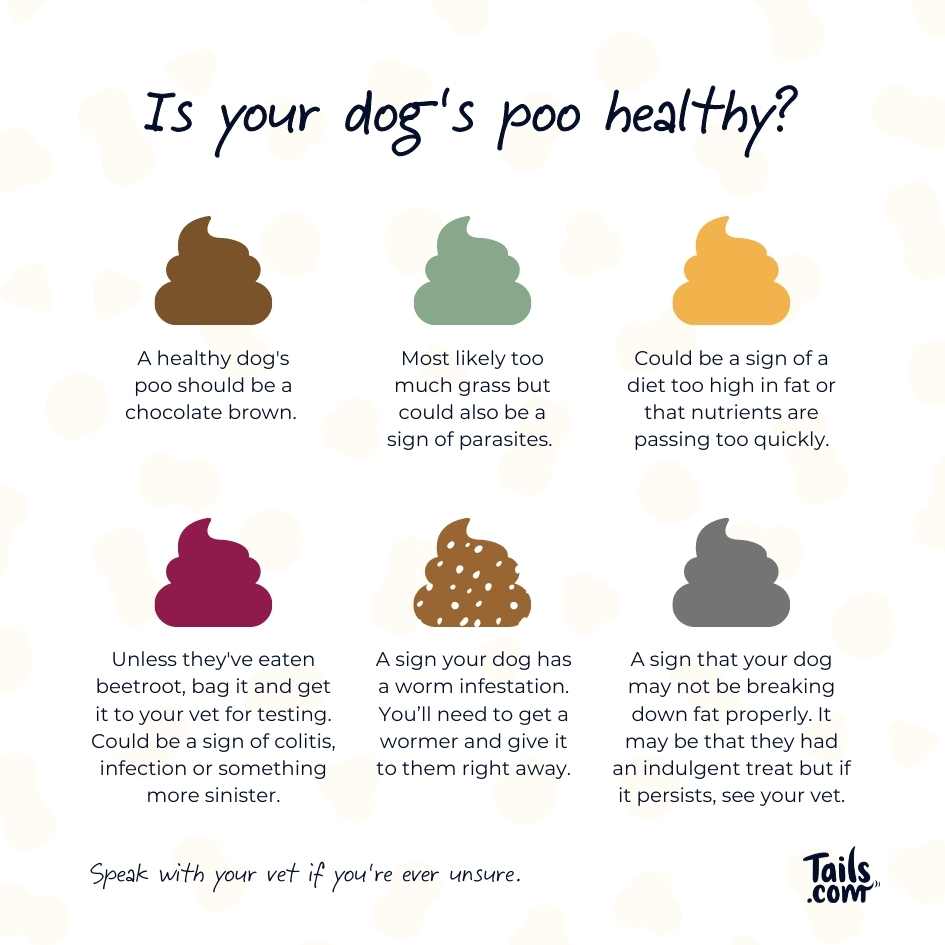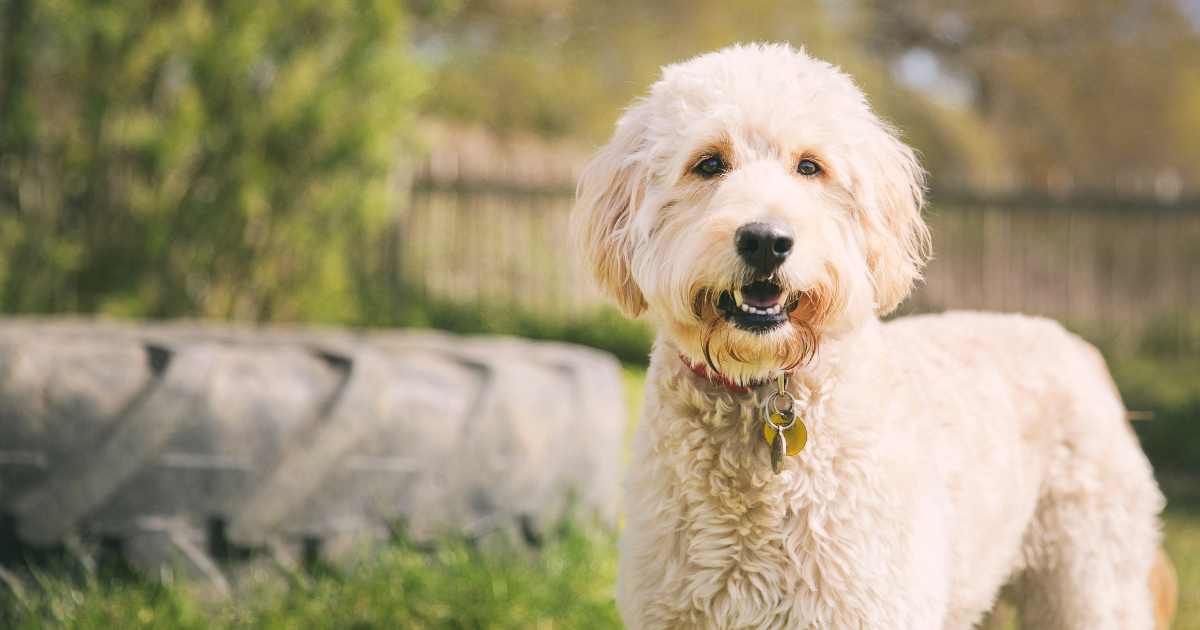As dog owners, many of us are slightly obsessed with poo. After all, keeping a close eye on your dog’s poo can help you spot when something’s not quite right with your pup.
No judgement, but you folk ask us about poo a lot. In fact, between January and June 2023, you asked us about poo, faeces and stool more than 11,100 times! Covering constipation to tricky picker uppers and sensitive tums.
So we thought we’d share a few handy poo facts that you might not know. (Best not to read this one right before dinner.)
Fact 1: You can learn a lot from poo colours
Paying close attention to the colour of your dog’s poo can be an illuminating experience. Here’s a quick guide to what different poo colours might mean.
- Brown: you’re all good! It’s a normal, healthy poo! Your dog can experience a change in the exact shade of brown, depending on what they’ve been eating or if their diet has changed recently.
- Orange / yellow: this can be a sign of biliary or liver problems. If it’s happening regularly, reach out to your vet for advice.
- Green: usually a sign that your dog’s been snacking on too much grass or too many leafy veggies. But if it persists even without greenery in the diet, it can be a sign of gall bladder issues, so check in with your vet if you’re concerned.
- Grey and greasy: this can be an indicator of a pancreas or biliary issue, so speak to your vet to rule out anything serious.
- Red or red streaks: the most common explanation is that there’s blood in your dog’s poo, so check their bottom for any cuts or injuries. If it continues, or you can’t see what the issue is, speak to your vet.
- Black and tarry: this could mean there’s bleeding in your dog’s upper gastrointestinal tract, so contact your vet so they can check it out.
- White spots or lines: this may be a sign that your dog has worms. Speak to your vet for a diagnosis, and to learn about next steps. Worms aren’t usually a serious issue, so there’s no need to worry. (Our monthly flea, tick and wormer subscription is the easiest way to protect your dog from tiny pests.)

Fact 2: Your dog’s anal glands release a strong scented liquid when they poo to mark their territory
Every dog has anal glands — a pair of small sacks that sit just inside their bottom, containing a pungent liquid that they use to mark their territory. Although they might seem far from glamorous, they’re actually pretty cool!
Anal glands are why dogs are so obsessed with sniffing each other’s bums and poos. They’re a bit like the social media of the dog world, giving out loads of information — by sniffing other dogs’ poo, your dog can learn who’s been there!
If you ever wonder why your dog insists on scooting across the floor, this could be a sign that their anal glands are blocked. When this happens, the anal glands get itchy and sore, causing your dog to seek out some scoot-powered relief. If your dog is scooting persistently and is looking uncomfortable, it’s best to check in with your vet.
Fact 3: Picking up your dog’s poo is good for everyone’s health and the local environment
Bagging your dog’s poo is more than simple common courtesy. Dog poo carries bacteria — and can also contain things like worms — and picking it up reduces the risk of contamination or spreading worms to other dogs and people. So keep up the good work.
Fact 4: There’s no magic poo number
(Except for the number two, obviously.) There’s no ‘normal’ amount of times your dog should poo each day. Some dogs only go once, while others might go three times a day. It all depends on your dog and their habits.
Poo frequency can change with your dog’s diet — how much they’re eating, and what it is. If someone’s snuck them a few extra treats you might notice an increase the day after…
Stress and anxiety can also cause your dog to poo more or less. If you’ve noticed a change in your dog’s pooing schedule, particularly if they’re pooing much more than usual, get in touch with your vet.
Fact 5: Dogs lock eyes with us while doing their business for protection
Ever had the awkward moment where your dog has locked eyes with you while they’re doing a poo? Well, there’s a good reason for that!
Dogs often feel vulnerable while doing their business and they’re trusting you to watch their back. You’re part of their ‘pack,’ so dogs are keeping an eye on your body language and reaction — just in case something happens.
Fact 6: There’s a reason behind the ‘poo dance’
It can be a curious ritual to observe, but many dogs kick grass over their pee or poo once they’ve relieved themselves. Why do they do this?
This is actually a fascinating bit of signposting they’re doing, leaving their scent for other dog’s to pick up. Read all about it in this dedicated blog post and accompanying video: Why does my dog kick up grass after peeing or pooing?
Fact 7: Dogs poo in alignment with the Earth’s magnetic field
It’s worth noting this study is a few years old and doesn’t mean your dog will do it 100% of the time. But research shows dogs prefer to toilet when their body is aligned on a north-south axis. Now that’s some wild science!
Looking for more poo expertise?
We’ve got all the poo-related information you could ever need over on our blog. Including some of our favourites, like:


Doggy IBS. Do I need to change his Tails food mix. He is grazing like a pony and sometimes his poo is perfect other times he is constipated and then there is the stuff you can’t pick up!! He only gets plain chicken or beef with his kibble. No treats! 😞.
Your advice would be appreciated.
He is nearly 13 and I am reluctant to go through blood tests etc unless I have to. Poor lad is easily stressed.
Thank you.
Hi Susie, we’re sorry to hear that your pup has had these tummy troubles recently. Our team would be happy to look into his kibble blend to see if we can make any changes to help – please send us an email at hello@tails.com with your details and we can take a closer look for you.
Hey Susie, please try some canned pumpkin puree for your dog. My old boy(17) staff cross had terrible tummy troubles. Since January I have given him 2 tablespoons in the morning and again around teatime/evening. This has really helped to regulate him. Once opened I store it in the fridge and its good for approx 5 days! He was nearly euthanized by the vet last December but I switched to Tails.com and introduced the pumpkin at the same time, he still gets the odd upset tummy but nowhere near as often. It’s amazing, I tell every dog owner I can about it! X
I’ve always said that social media for dogs would be called NoseBum 😂 🐩 🐶
Hi,
Rosie has just been diagnosed with severe pancreatitis, involving her being in the hospital for several days and, as she has had this before (not so severe) we have been informed to keep her, for life, on a low fat diet. I have shown them the products she currently enjoys, such as the dental and chew sticks – which are no longer suitable for her, and also the kibble she has is deemed to high in fat. Any help you can give or do we have to go elsewhere.? We are also giving her Royal Canine Low Fat tinned dog food and also boiled chicken breast, warm, chopped up.
We’re sorry to hear of Rosie’s recent diagnosis, Julia. We do offer blends for dogs that suffer from pancreatitis, this is an option during sign-up that you can select. But if you do need more support with her blend or treat options for her, our Nutrition team are also here, just pop us an email at hello@tails.com with your details and our Customer team can refer you over 💙